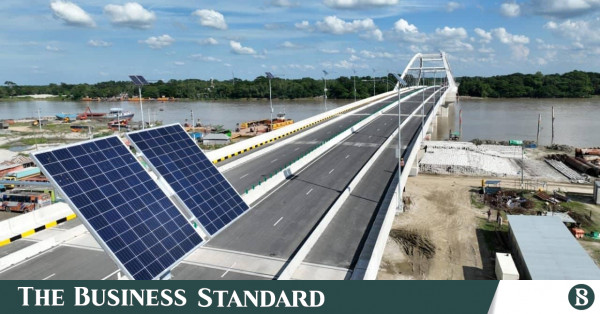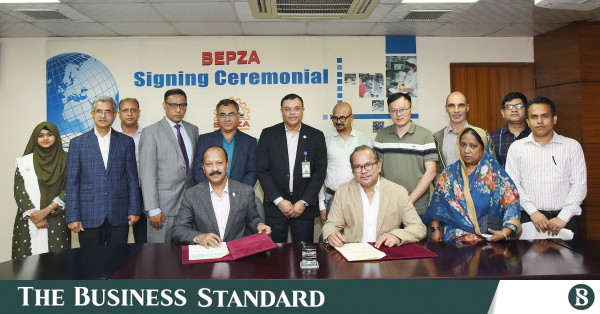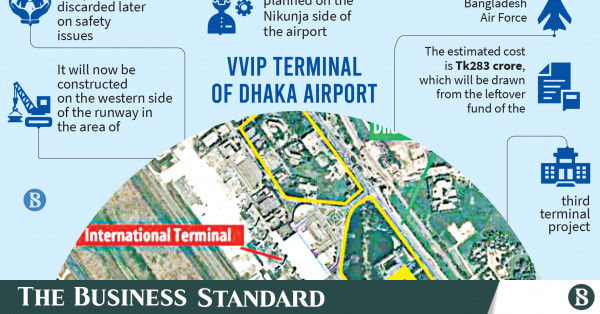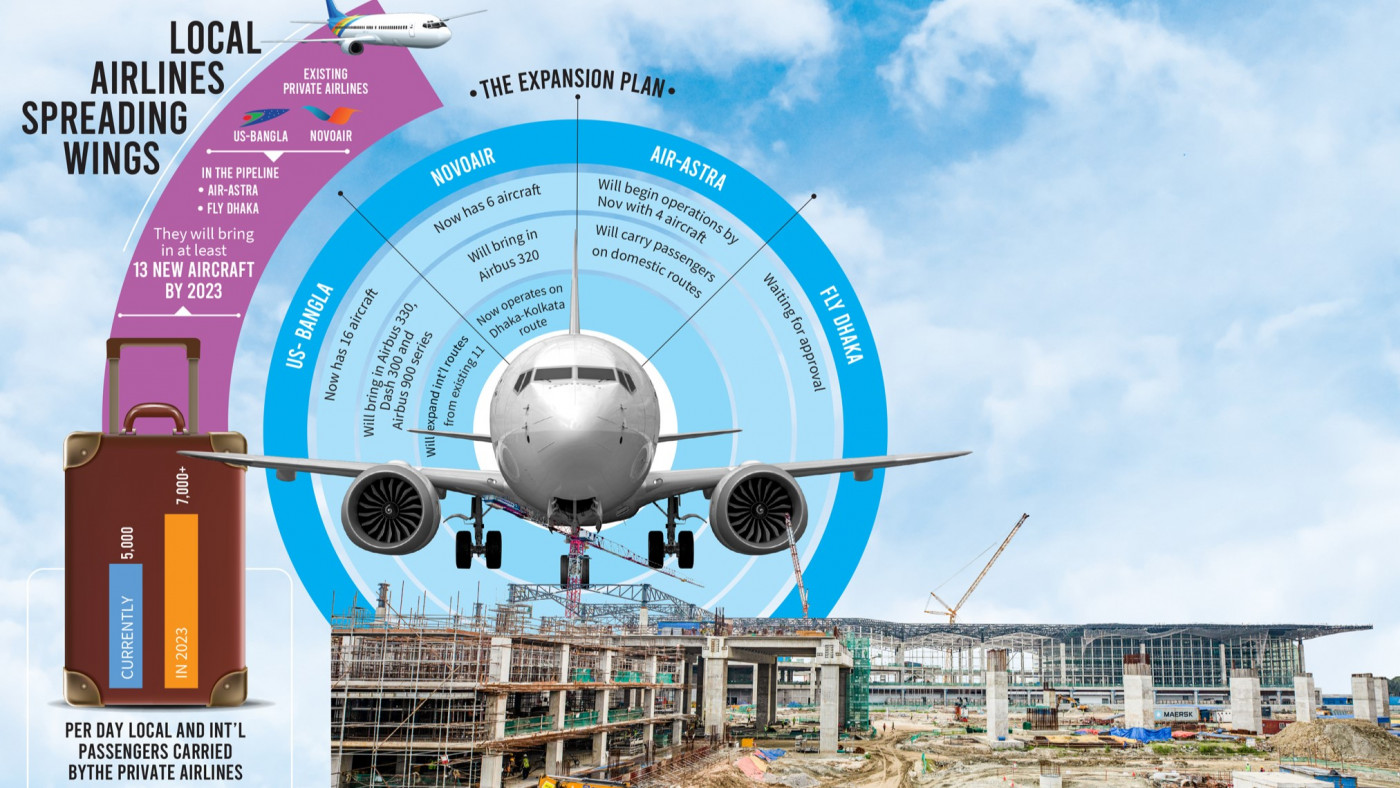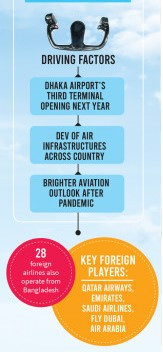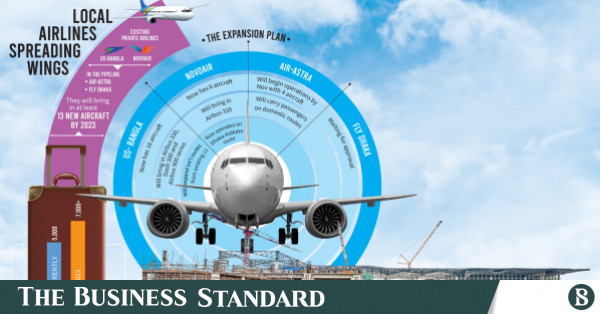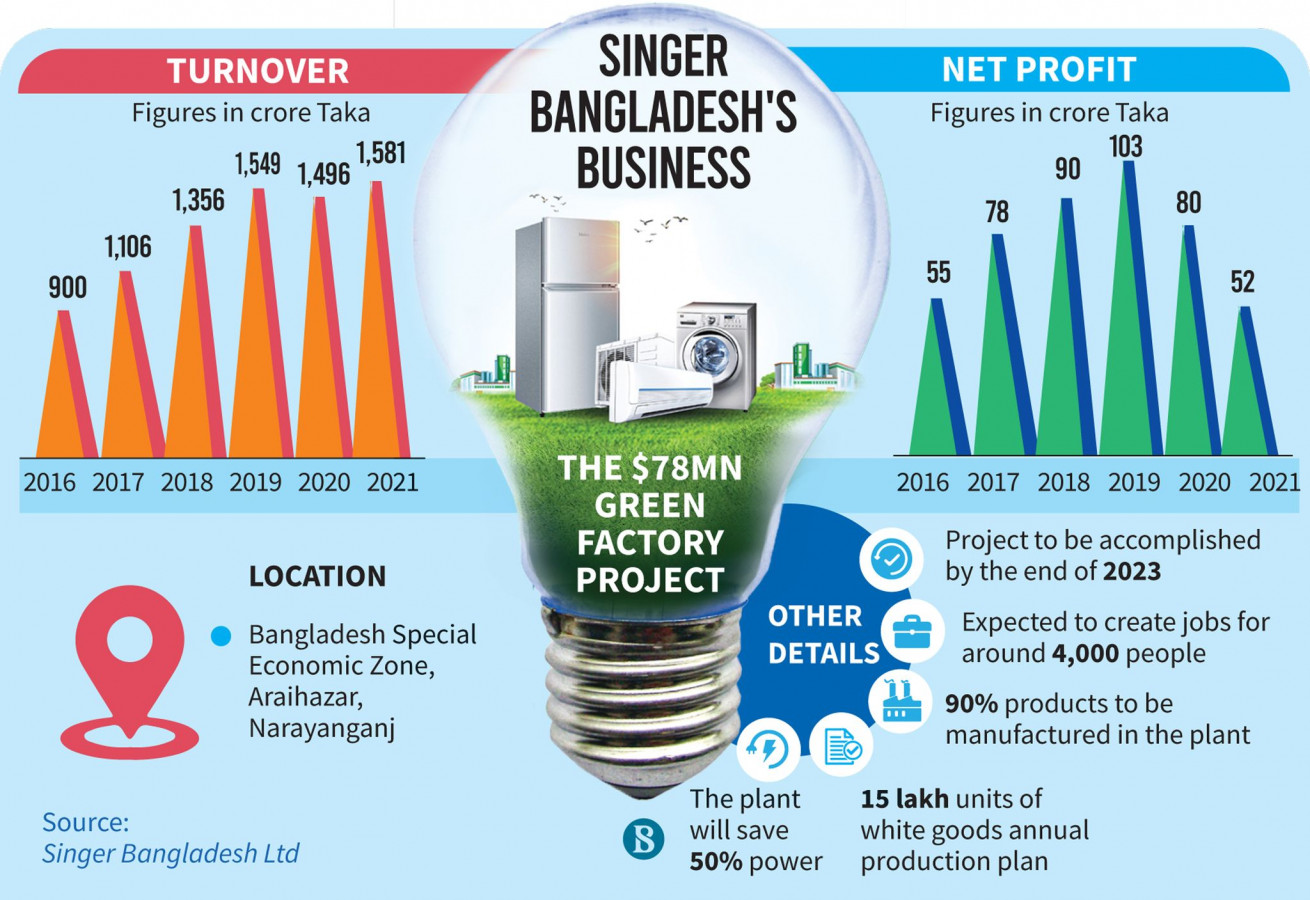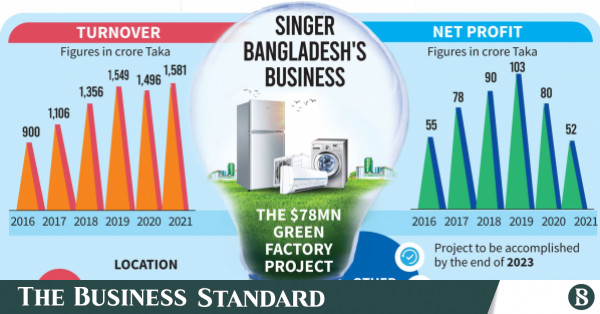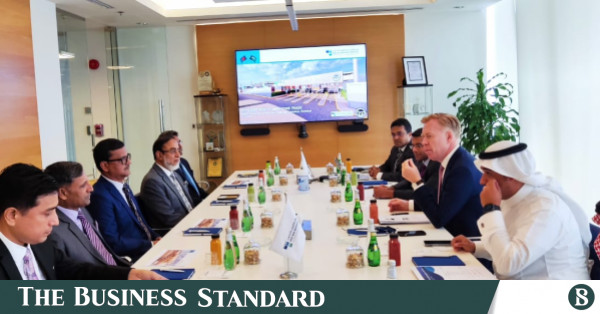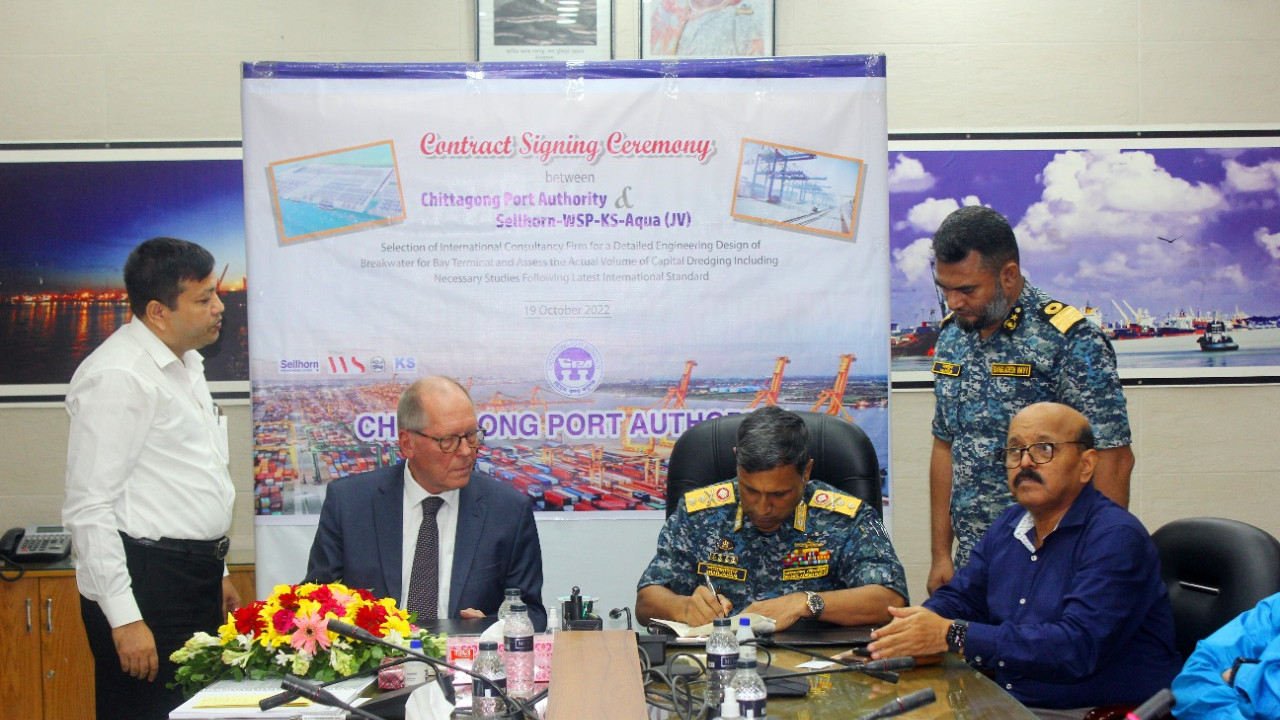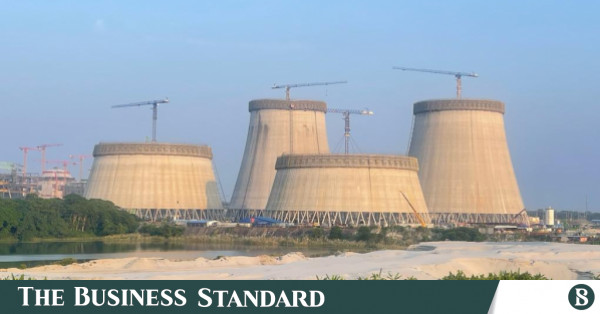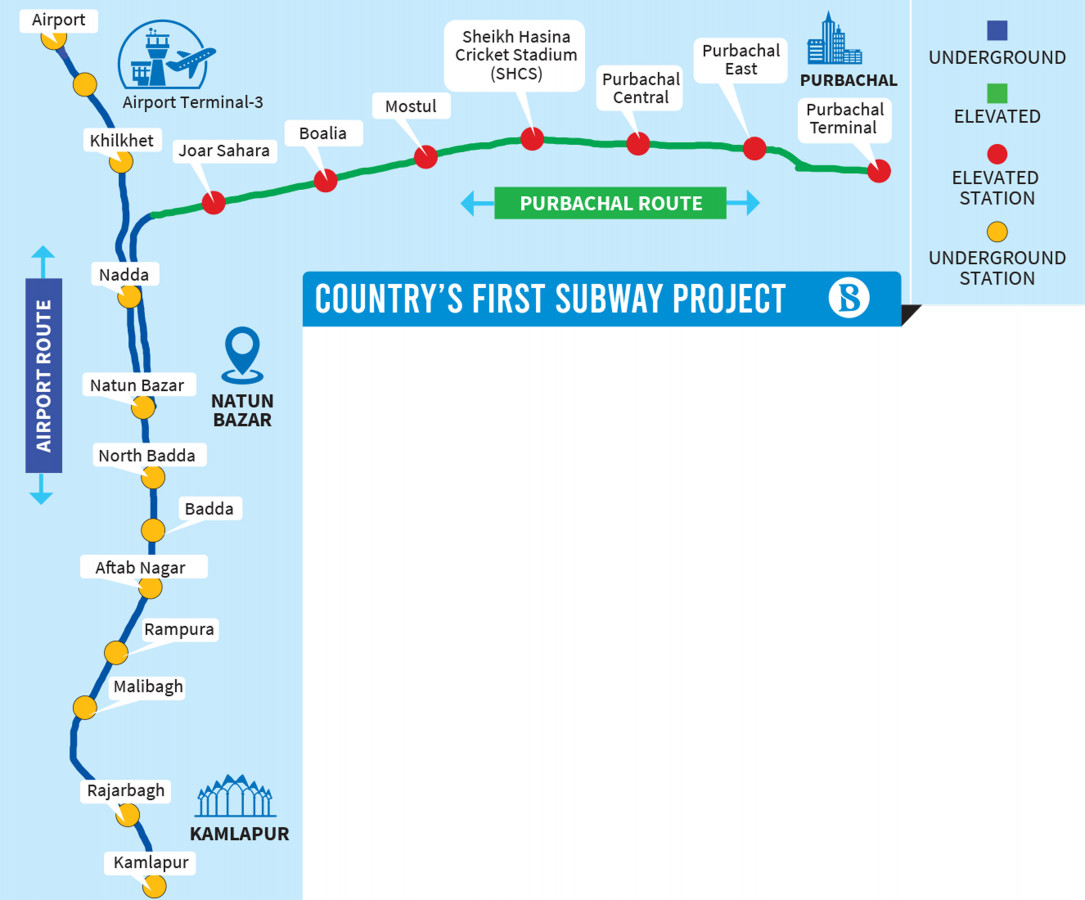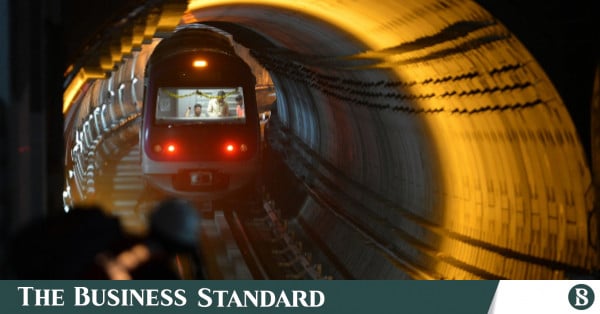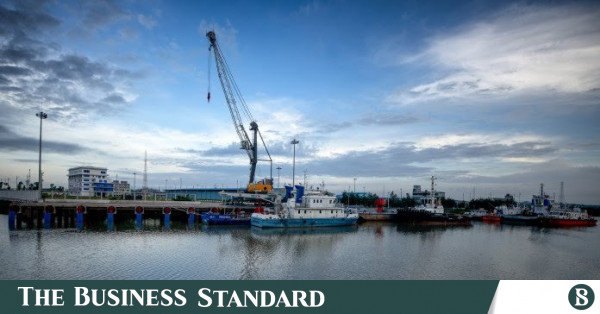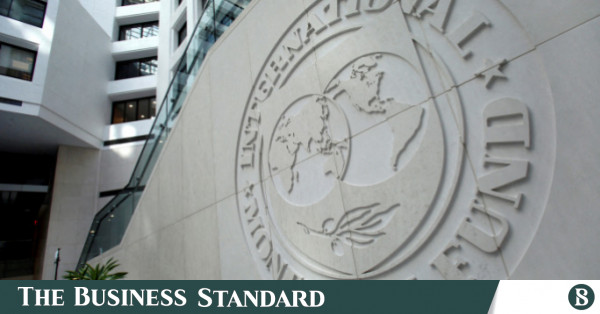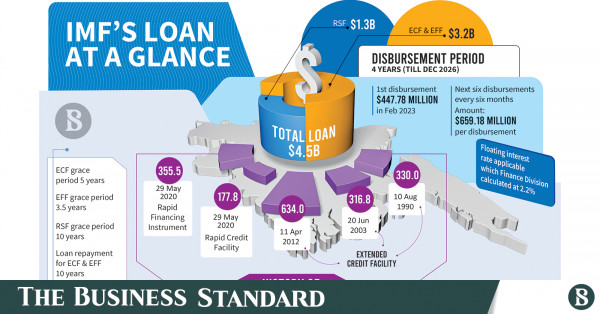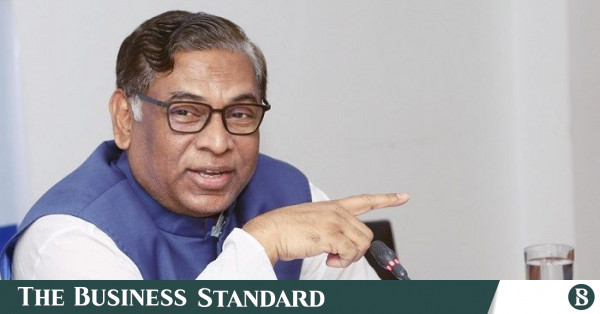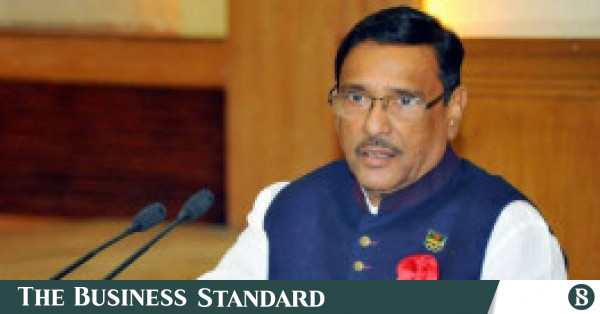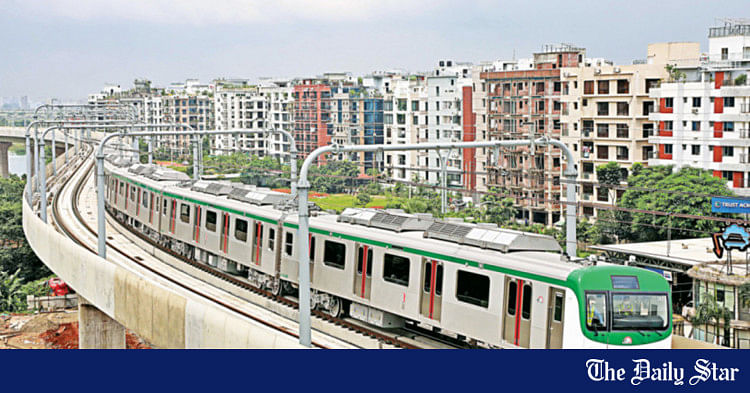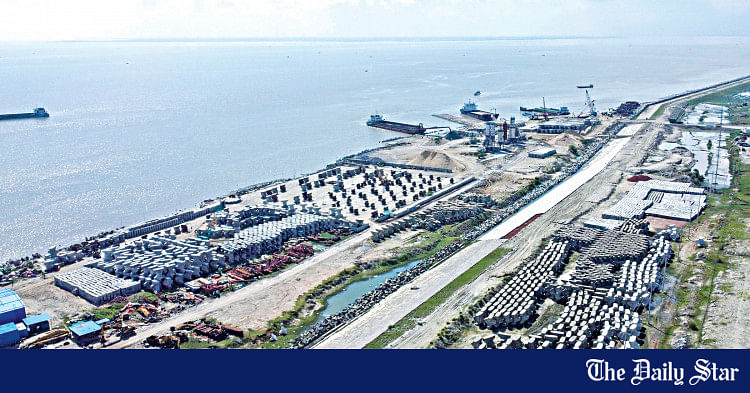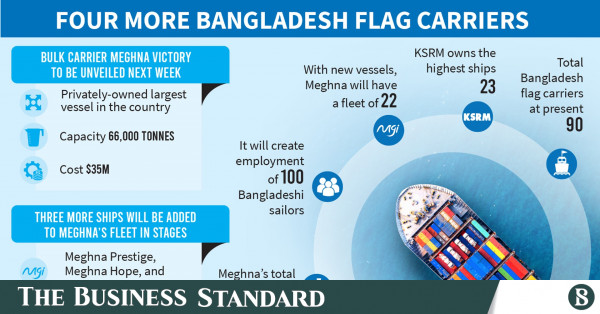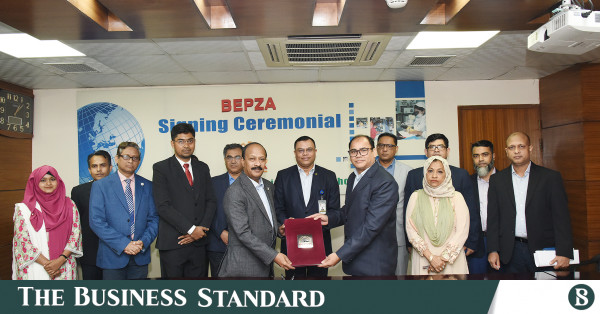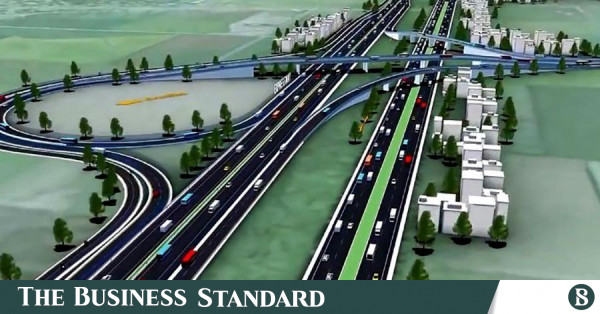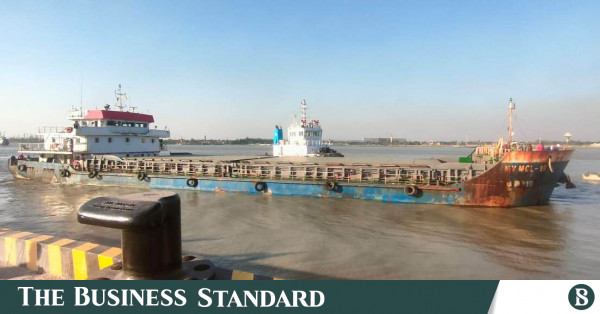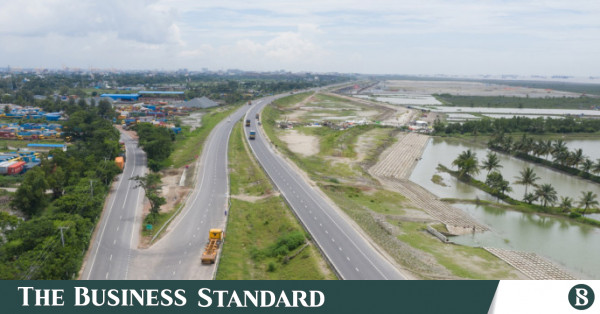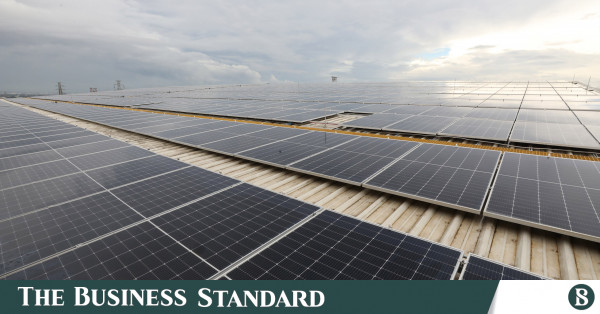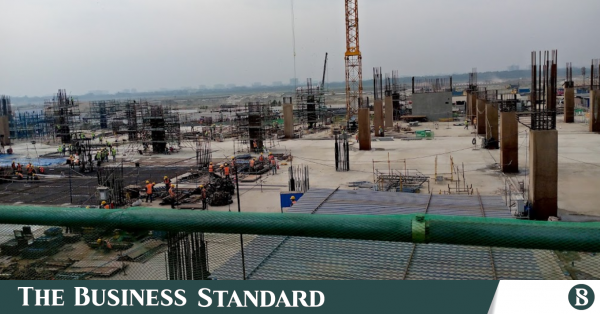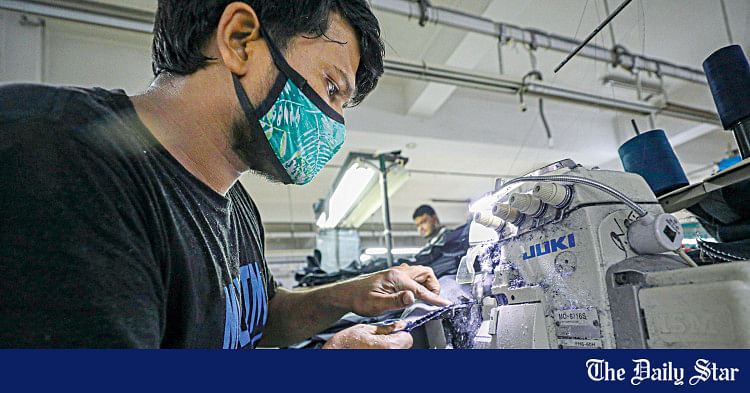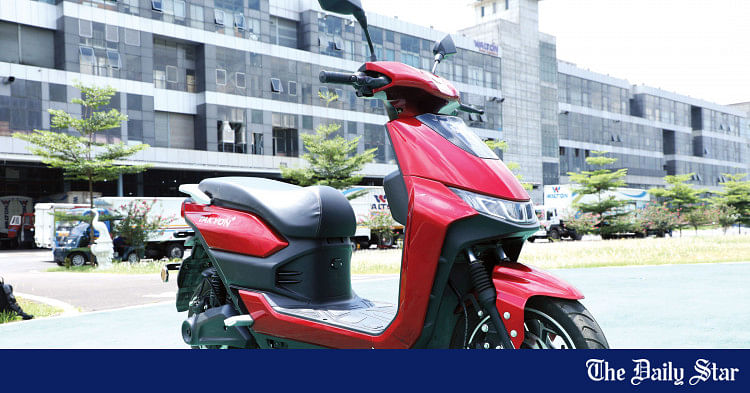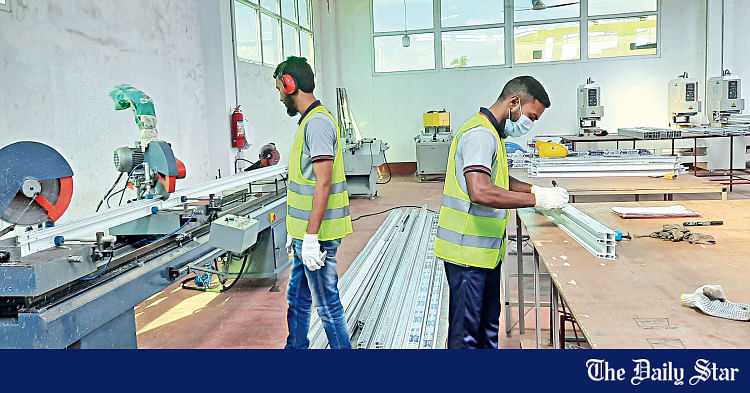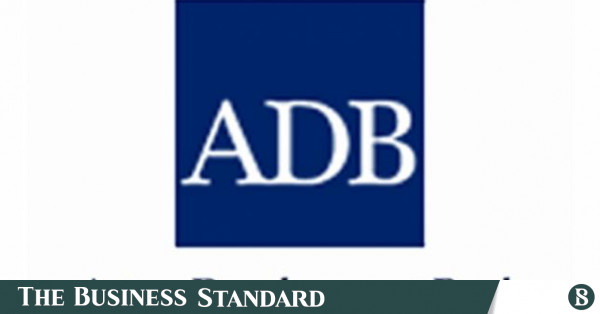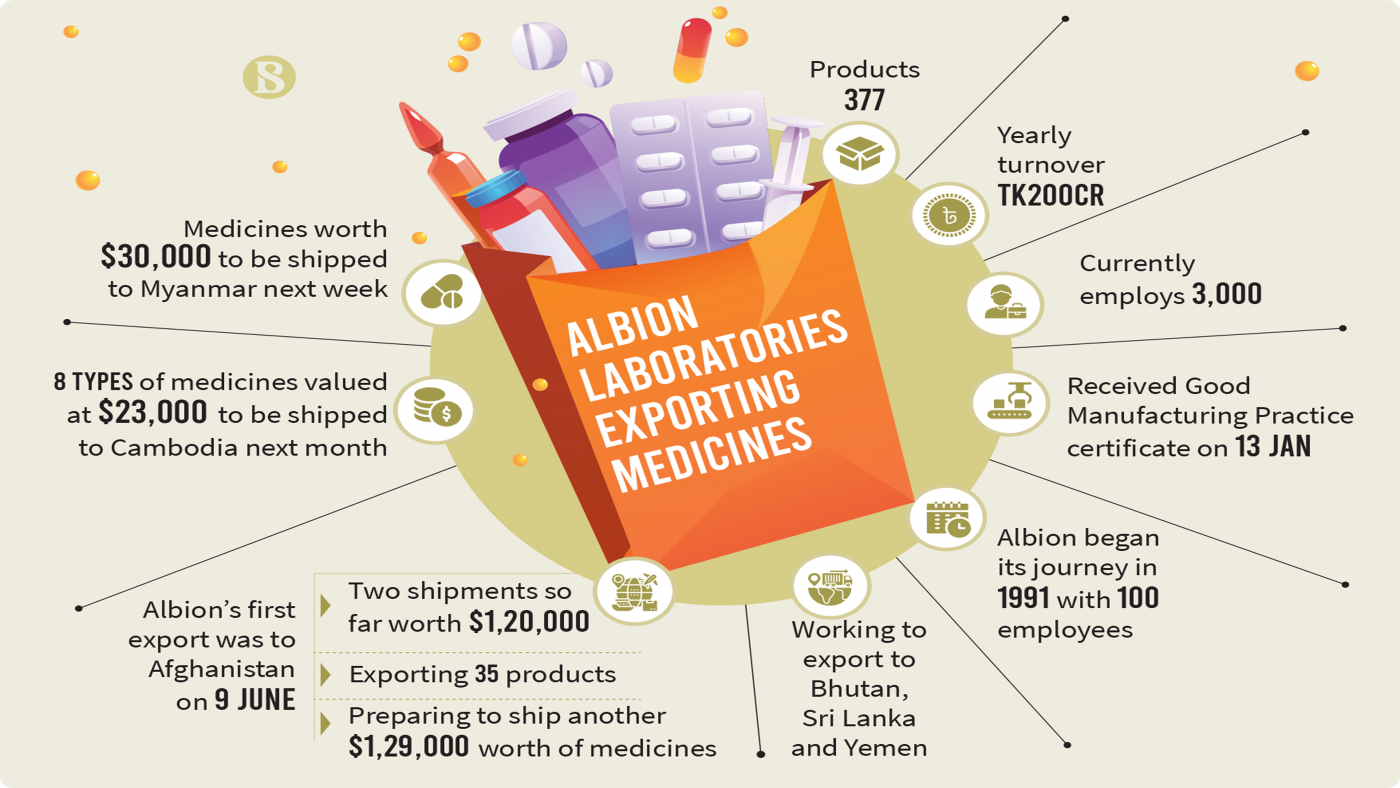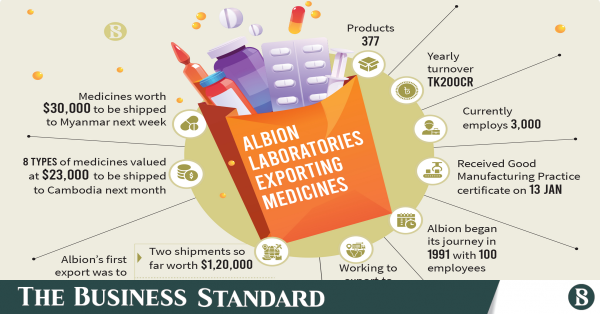The Switzerland-based construction chemical manufacturer Sika Bangladesh Limited has begun setting up a factory in the Meghna Industrial Economic Zone (MIEZ) with an investment of $6 million.
The groundbreaking ceremony of the factory was held on Thursday at the MIEZ in Sonargaon upazila of Narayanganj.
Speaking as the chief guest at the programme, Bangladesh Economic Zones Authority (BEZA) Executive Chairman Shaikh Yusuf Harun said the company will start production in the third quarter of next year.
He said, "I want to mention how proud we are to be a part of a venture as big as yours. Sika has been operating in 101 countries, with a global turnover of $9.38 billion in 2021 alone. This is nothing but good news for us.
"I would like to take this opportunity to assure you that your venture will have all-out support from us in every step of your way."
Swiss Ambassador to Bangladesh Nathalie Chuard said, "Bangladesh is transitioning from the list of least developed countries (LDC) to the status of a developing country. Foreign direct investment (FDI) is very important for Bangladesh. We want to be a cooperative partner in the development of Bangladesh."
Director of Meghna Group of Industries (MGI) Tanjima Binthe Mostafa said, "The decision to create an economic zone is a significant step of the Bangladesh government. As a result, foreigners are becoming interested in investing here. This is developing the country's industrial sector."
Since 1910, Sika has been a reliable partner in construction projects in almost every part of the world and has gained an enviable reputation for quality products and system solutions backed by unrivaled technical expertise and support.
Sources at Sika said the firm will produce chemicals required for various dry mortars in Bangladesh. It will improve the quality of the mixture, making infrastructure sustainable.
Country Head of Sika Bangladesh Sanjiban Roy Nandi told TBS, "We are building the factory in a 10,000 square metre area, where the initial investment will be $6 million. It will employ around 100 people."
"The factory will produce construction chemical admixture and grout chemicals. There is a heavy demand for this chemical in Bangladesh as the country is going through large scale infrastructural development. The market size of these products is around Tk800-900 crore in the country."
Sanjiban Roy Nandi also said the company has applied for one more plot in the economic zone.
"We started our operations in Bangladesh in 2017. Currently, we bring the finished products and sell them through local distributors. We have supplied our products to the mega projects that are going on in Bangladesh. Here we can easily deliver the product when it is ready," said Sanjiban Roy Nandi.
BEZA Executive Member Abdul Azim Chowdhury and Regional Target Market Manager Concrete Asia and Pacific and Area Manager South Asia Yumi Kan were also present at the ceremony.
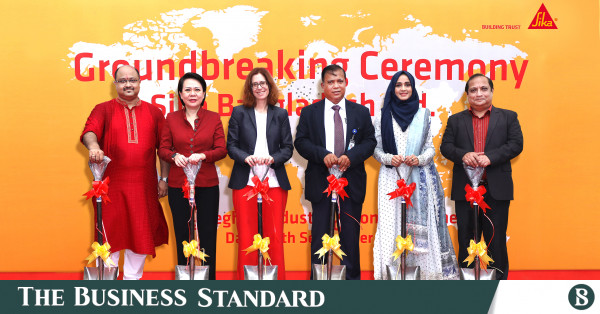
 www.tbsnews.net
www.tbsnews.net

The government is creating master plans for all upazilas to provide better civic amenities to people and the documents would guide future development activities at the upazilas for planned urbanisation.
The master plans include development of urban and rural infrastructures for best land use and protecting the environment.
Out of the 495 upazilas, master plans have already been prepared for 14 and the preparation of master plans for eight other upazilas are in the final stage.
The creation of the master plans is part of the government's strategy for turning Bangladesh into a developed nation by 2041.
Separate master plans for all upazilas will be formulated by 2030.
In addition to the upazila headquarters, the entire upazila will be incorporated into an upazila master plan design. There will be designated sites for housing, hospitals, markets, schools and colleges, playgrounds, agricultural farms, and industrial facilities.
The Local Government Engineering Department (LGED) is implementing the upazila-based master plan formulation under the "Technical Assistance Project for My Village-My Town". The ruling Awami League's election manifesto of 2018 pledged for planned urbanisation and increasing civic amenities across the country through the implementation of the "My Village- My Town" mega plan.
Monzur Sadeque, director of the technical assistance project, stressed the need for formulating separate master plans for all upazilas saying, "The master plan will guide future development activities. There is no alternative to the formulation and implementation of upazila master plans if we want to ensure planned development of urban and rural areas at the upazila level."
LGED officials told TBS that the development of rural economy, creation of employment opportunities, reduction of inequality, and poverty reduction through proper planning and development work is one of the main objectives of the formulation of upazila master plan.
Proper implementation of the master plan will ensure the best utilisation of land resources of the upazilas, while the increasing demand for accommodation and urban civic amenities can be met through public-private partnership. Besides, it will be possible to preserve agricultural land, reservoirs, natural canals, water flows, open spaces, playgrounds, parks, etc.
Expressing similar views, Akter Mahmud, professor of urban and regional planning at Jahangirnagar University, said agricultural land, and wetlands are being destroyed due to unplanned construction across the country.
"But nature, agricultural land, and wetlands need to be conserved for the sake of future generations. So, it has become necessary to prepare development master plans for all the upazilas of the country."
Dr Md Musleh Uddin Hasan, professor of Urban and Regional Planning at Bangladesh University of Engineering and Technology, said preparing a master plan is the first step toward planned development.
"Once prepared, the master plan should be made into a compulsory document. Therefore, in the second phase, the master plan should be made into a government gazette. An institution must be made responsible for ensuring that everyone follows this. At the same time, the institution should be equipped with adequate manpower and necessary logistics."
"After that, government agencies at the upazila level will build the infrastructure according to their respective responsibilities. For example, those who will be responsible for the construction of schools will set them up at designated places. They will not be required to look for a site to set up a school."
Akter Mahmud of Jahangirnagar University, however, said upazila master plans are local level plans. There should be another plan at the national level – the national physical master plan – which will guide development strategies for the entire country by preserving the rivers, canals, banks, hills, forests, and plain lands.
The national-level plan will include strategies for all kinds of development activities, including how a specific region of the country will be developed, what kind of industry will be in any area, and where economic zones will be set up, he suggested, adding upazila master plans should be prepared in light of this plan.
Formulation of the national physical plan and upazila master plans at the same time will be beneficial, he said.
Dr Salauddin M Aminuzzaman, a local government specialist, and professor of the Department of Public Administration at Dhaka University, told TBS that even if the LGED formulates the upazila master plans, it must take opinions from elected public representatives to local government.
"Infrastructure development activities should now be spread to the union level from the upazila level. The LGED will understand well where the roads will be, where the hospital or school will be, and where the markets will be. They have that technical skill. However, if the LGED does this work alone, then the local government is undermined.
"Ideas about which roads will pass through which areas should come from the local government. Especially, in the development of infrastructure up to the rural level, if the opinions of the chairman and members of the union and upazila parishads are not taken, then the development work may face obstacles at the implementation stage."
Progress so far
The feasibility study for the formulation of upazila-specific master plans under LGED's "Technical Assistance Project for My Village-My Town" has been completed.
Based on the survey report, a separate project will be taken up for the formulation of the master plans. The average cost of preparing a master plan design for each upazila is estimated at Tk11 crore. As such, more than Tk5,000 crore will be spent on preparing master plans for all upazilas.
Project Director Monzur Sadeque said the LGED completed the preparation of master plans for 256 municipalities in the country between 2005 and 2020. In the next stage, an initiative has been taken to formulate the upazila master plans, he said, adding that the municipal master plans will be updated during the preparation of the upazila master plans.
LGED officials said the department has set a target to prepare a project proposal for the formulation of upazila master plans, get it approved, and start implementing it within the next one year.
They also said that the Asian Development Bank (ADB) has already agreed preliminarily to finance the project. The Japan International Cooperation Agency (Jica) has also expressed interest in financing such projects.
According to officials, the Urban Development Directorate prepared master plans for 14 upazilas in 2014. These upazilas are Dohar and Nawabganj in Dhaka, Shibchar in Madaripur, Raipur in Lakshipur, Shibpur in Narsingdi, Ishwarganj in Mymensingh, Faridpur Sadar, Bagmara in Rajshahi, Gangni in Meherpur, Saghata in Gaibandha, Sonatala and Sariakandi in Bogura, Ramu in Cox's Bazar, and Rangunia in Chattogram.
Besides, the LGED is working on the preparation of master plans for12 other upazilas, which include reviewing and updating four upazila master plans that were prepared in 2014. The eight new upazilas include Manoharganj in Narsingdi, Lalmai in Cumilla, Fakirhat in Netrokona, Kaliganj in Satkhira, and Dumki in Patuakhali.
The work is scheduled to be completed by December 2023.
Although master plans have been prepared for several upazilas, none have entered the implementation phase.
According to urban planners, if the master plans are to be implemented, urban planners should be appointed up to the upazila levels. At the same time, necessary logistic support should be provided and institutional capacity should be strengthened.
What the plan contains
The development plan prepared for Nawabganj upazila in Dhaka includes guidelines for controlled use of land for roads, houses, industries, open spaces, schools and hospitals, protecting as much land as possible for agriculture.
The plan, though scheduled for 2013-2033 period, was submitted to the housing ministry's Urban Development Directorate in June 2018.
It has five tiers of development works to be done in 5, 10 and 20 years both in urban and rural areas.
In its land use zoning, the plan keeps the highest share of land (56.8%) for agriculture, followed by nearly 20% for residential purpose, 15.6% for water bodies, and 1.6% for transportation, earmarking around 0.5% land for manufacturing and processing, economic zone, health services, and educational institutions.
It also reflects people's wish list, setting improved healthcare, transportation, and education among development priorities at the union level. The plan short-listed nine projects to be implemented in two five-year phases till 2023 at an estimated cost of Tk46.68 crore.
As upazila parishad does not have its own revenue source, it will need more grants from the government or development partners to finance such projects, consultants for the plan suggest.
Though it is more than four years since the plan was submitted to the Urban Development Directorate, local officials know little about the extensive 226-page plan with detailed area maps.
Matiur Rahman, chief executive officer of Nawabganj upazila, said he does not have any idea about the upazila master plan.
Shibchar Upazila Nirbahi Officer (UNO) Md Razibul Islam also said he does not know about the master plans as he has joined the upazila very recently.
Long way to go
The planned township and integrated rural development will require infrastructure and service facilities that can be done by the proper utilisation of such urban and rural area plans. This in turn will make a positive impact on economic growth, social progress, and environmental sustainability in the whole region, says the project document.
In a report launched on 29 September in Dhaka, the World Bank also stressed the need for the development of a second tier of urbanisation to create jobs outside the two major cities – Dhaka and Chattogram.
The report, "Bangladesh Country Economic Memorandum: Change of fabric", calls for getting urbanisation right as it finds the benefits of urbanisation have slowed in Bangladesh due to high concentration on two major cities and poor development of secondary cities.
It feels the need for developing transport routes and digital connectivity to attract firms and people to small and medium-sized cities and create tradable activities in all types of towns.
But the plan is too big to reach the stage of physical implementation as the master plans for all the upazilas will take a few more years to get in shape.
The LGED's feasibility study report has proposed the preparation of master plans for upazilas in different phases. Master plans for 90 upazilas will be formulated in each phase.
The report also said that it has been proposed to prepare master plans in different phases due to the lack of institutions capable of preparing city-centric master plans.
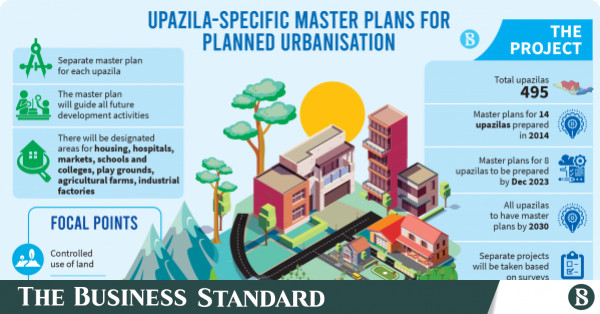
 www.tbsnews.net
www.tbsnews.net
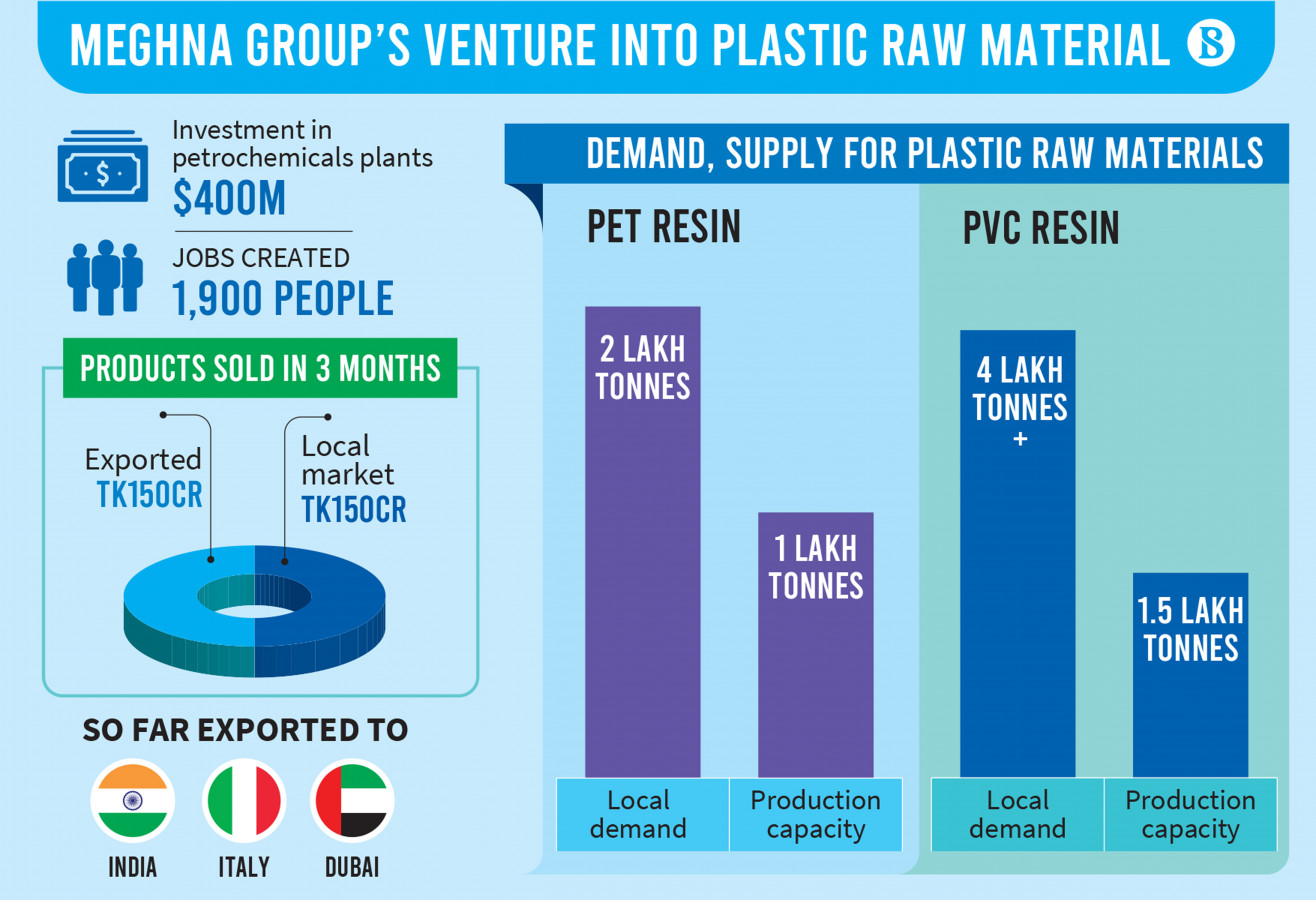
The Meghna Group has set its footprints in the international plastic raw material market, with an export worth Tk150 crore in just three months of launching its petrochemical factory, the first of its kind in the country.
"Aside from exporting, we have sold plastic raw materials worth Tk150 crore in the local market within this period," Suman Bhowmik, senior deputy general manager of Meghna Group of Industries, told The Business Standard (TBS).
He said there is a huge demand for plastic raw materials in the country, which previously depended totally on imports, and in the international market.
"The demand for PET resin in the country is two lakh tonnes per annum, while we have a production capacity of one lakh tonnes," he said.
"PVC resin production has just started in the country. Some of our products have already been sold and used for manufacturing plastic pipes. Demand for PVC resin in the country is above four lakh tonnes per year while we have a production capacity of 1.5 lakh tonnes," he added.
The local business conglomerate invested $400 million to set up the plant in Meghna Economic Zone (MEZ) in Sonargaon, Narayanganj. Construction of the petrochemical plant on an area of 97,205.491 square metre in MEZ took about five years.
The Meghna Group started producing Polyvinyl Chloride (PVC) resin on 14 September and Polyethylene Terephthalate (PET) resin three months ago.
PVC is used in a variety of applications in the building and construction, health care, electronics, automobile and other sectors, in products ranging from piping and siding, blood bags and tubing, to wire and cable insulation, windshield system components and more.
PET is used in fibres for clothing, containers for liquids and foods, and thermoforming for manufacturing, and in combination with glass fibre for engineering resins.
Apart from selling products in the local market, the company has already exported PET resin to India, Italy and Dubai, said sources at the company.
The plant is equipped to produce three different grades of PVC resin: K57 – used for Injection moulded fittings, K67 – used for rigid PVC pipes, profiles and films, and K70 – used for packaging films, calendered films, and cables.
Suman Bhowmik said, "This is the largest investment in the private sector here. Our factory employs about 1,900 people."
"The Barmag Huitong Technology used by Meghna PET produces better quality PET compared to other Technologies. Also, Meghna PET uses a liquid heating system and vapor in production which results in low heat consumption. High class technology and Solid state Polycondensation plant from UOP-SINCO, Italy makes Meghna PET the best in the market," Said Suman Bhowmik.
The Meghna Group's petrochemical factory has not been using its full capacity for production, said sources at the company.
Suman Bhowmik said, "The PET Resin plant is operating at 90% capacity. There is an order of 500 tonnes of PVC resin from India. Soon we will go to our maximum production."
Plastic consumption increasing
According to Bangladesh Plastics Market Outlook 2019-2025, published by the Business Wire, factors such as low-cost manufacturing, sustainability, large scale availability of raw material, and durability are driving the Bangladesh plastic market at a Compound Annual Growth Rate (CAGR) of 8%.
The current per capita plastic consumption in Bangladesh is 7 kg per year as compared to around 23 kg per year in India and over 100 kg per year in other developed countries like the US and Singapore. Hence there exists a huge potential in this market which is poised to grow to $6.5 Billion by 2024-25, said report.
Shamim Ahmed, president of Bangladesh Plastic Goods Manufacturers and Exporters Association, told TBS, "We need many types of raw materials. We are heavily dependent on imports for PET Resin and PVC resin. I have bought PVC Resin at $1,150-$1,200 per tonne as its price fluctuates in the international market.
"If this raw material is produced in the country it will benefit our business heavily. We will be able to manufacture and export various products made with these locally produced raw materials. It is the opening of a new horizon for the country."
Bangladesh Economic Zones Authority (BEZA) Executive Chairman Shaikh Yusuf Harun told TBS, "The Meghna Group has opened its petrochemicals plant, which is its biggest project. The raw materials produced here will advance other industries in the country."

 www.tbsnews.net
www.tbsnews.net
The groundbreaking ceremony of the factory was held on Thursday at the MIEZ in Sonargaon upazila of Narayanganj.
Speaking as the chief guest at the programme, Bangladesh Economic Zones Authority (BEZA) Executive Chairman Shaikh Yusuf Harun said the company will start production in the third quarter of next year.
He said, "I want to mention how proud we are to be a part of a venture as big as yours. Sika has been operating in 101 countries, with a global turnover of $9.38 billion in 2021 alone. This is nothing but good news for us.
"I would like to take this opportunity to assure you that your venture will have all-out support from us in every step of your way."
Swiss Ambassador to Bangladesh Nathalie Chuard said, "Bangladesh is transitioning from the list of least developed countries (LDC) to the status of a developing country. Foreign direct investment (FDI) is very important for Bangladesh. We want to be a cooperative partner in the development of Bangladesh."
Director of Meghna Group of Industries (MGI) Tanjima Binthe Mostafa said, "The decision to create an economic zone is a significant step of the Bangladesh government. As a result, foreigners are becoming interested in investing here. This is developing the country's industrial sector."
Since 1910, Sika has been a reliable partner in construction projects in almost every part of the world and has gained an enviable reputation for quality products and system solutions backed by unrivaled technical expertise and support.
Sources at Sika said the firm will produce chemicals required for various dry mortars in Bangladesh. It will improve the quality of the mixture, making infrastructure sustainable.
Country Head of Sika Bangladesh Sanjiban Roy Nandi told TBS, "We are building the factory in a 10,000 square metre area, where the initial investment will be $6 million. It will employ around 100 people."
"The factory will produce construction chemical admixture and grout chemicals. There is a heavy demand for this chemical in Bangladesh as the country is going through large scale infrastructural development. The market size of these products is around Tk800-900 crore in the country."
Sanjiban Roy Nandi also said the company has applied for one more plot in the economic zone.
"We started our operations in Bangladesh in 2017. Currently, we bring the finished products and sell them through local distributors. We have supplied our products to the mega projects that are going on in Bangladesh. Here we can easily deliver the product when it is ready," said Sanjiban Roy Nandi.
BEZA Executive Member Abdul Azim Chowdhury and Regional Target Market Manager Concrete Asia and Pacific and Area Manager South Asia Yumi Kan were also present at the ceremony.

Swiss co Sika starts factory construction in Meghna Industrial EZ investing $6m
The market size of construction chemicals is around Tk800-900 crore in Bangladesh

The government is creating master plans for all upazilas to provide better civic amenities to people and the documents would guide future development activities at the upazilas for planned urbanisation.
The master plans include development of urban and rural infrastructures for best land use and protecting the environment.
Out of the 495 upazilas, master plans have already been prepared for 14 and the preparation of master plans for eight other upazilas are in the final stage.
The creation of the master plans is part of the government's strategy for turning Bangladesh into a developed nation by 2041.
Separate master plans for all upazilas will be formulated by 2030.
In addition to the upazila headquarters, the entire upazila will be incorporated into an upazila master plan design. There will be designated sites for housing, hospitals, markets, schools and colleges, playgrounds, agricultural farms, and industrial facilities.
The Local Government Engineering Department (LGED) is implementing the upazila-based master plan formulation under the "Technical Assistance Project for My Village-My Town". The ruling Awami League's election manifesto of 2018 pledged for planned urbanisation and increasing civic amenities across the country through the implementation of the "My Village- My Town" mega plan.
Monzur Sadeque, director of the technical assistance project, stressed the need for formulating separate master plans for all upazilas saying, "The master plan will guide future development activities. There is no alternative to the formulation and implementation of upazila master plans if we want to ensure planned development of urban and rural areas at the upazila level."
LGED officials told TBS that the development of rural economy, creation of employment opportunities, reduction of inequality, and poverty reduction through proper planning and development work is one of the main objectives of the formulation of upazila master plan.
Proper implementation of the master plan will ensure the best utilisation of land resources of the upazilas, while the increasing demand for accommodation and urban civic amenities can be met through public-private partnership. Besides, it will be possible to preserve agricultural land, reservoirs, natural canals, water flows, open spaces, playgrounds, parks, etc.
Expressing similar views, Akter Mahmud, professor of urban and regional planning at Jahangirnagar University, said agricultural land, and wetlands are being destroyed due to unplanned construction across the country.
"But nature, agricultural land, and wetlands need to be conserved for the sake of future generations. So, it has become necessary to prepare development master plans for all the upazilas of the country."
Dr Md Musleh Uddin Hasan, professor of Urban and Regional Planning at Bangladesh University of Engineering and Technology, said preparing a master plan is the first step toward planned development.
"Once prepared, the master plan should be made into a compulsory document. Therefore, in the second phase, the master plan should be made into a government gazette. An institution must be made responsible for ensuring that everyone follows this. At the same time, the institution should be equipped with adequate manpower and necessary logistics."
"After that, government agencies at the upazila level will build the infrastructure according to their respective responsibilities. For example, those who will be responsible for the construction of schools will set them up at designated places. They will not be required to look for a site to set up a school."
Akter Mahmud of Jahangirnagar University, however, said upazila master plans are local level plans. There should be another plan at the national level – the national physical master plan – which will guide development strategies for the entire country by preserving the rivers, canals, banks, hills, forests, and plain lands.
The national-level plan will include strategies for all kinds of development activities, including how a specific region of the country will be developed, what kind of industry will be in any area, and where economic zones will be set up, he suggested, adding upazila master plans should be prepared in light of this plan.
Formulation of the national physical plan and upazila master plans at the same time will be beneficial, he said.
Dr Salauddin M Aminuzzaman, a local government specialist, and professor of the Department of Public Administration at Dhaka University, told TBS that even if the LGED formulates the upazila master plans, it must take opinions from elected public representatives to local government.
"Infrastructure development activities should now be spread to the union level from the upazila level. The LGED will understand well where the roads will be, where the hospital or school will be, and where the markets will be. They have that technical skill. However, if the LGED does this work alone, then the local government is undermined.
"Ideas about which roads will pass through which areas should come from the local government. Especially, in the development of infrastructure up to the rural level, if the opinions of the chairman and members of the union and upazila parishads are not taken, then the development work may face obstacles at the implementation stage."
Progress so far
The feasibility study for the formulation of upazila-specific master plans under LGED's "Technical Assistance Project for My Village-My Town" has been completed.
Based on the survey report, a separate project will be taken up for the formulation of the master plans. The average cost of preparing a master plan design for each upazila is estimated at Tk11 crore. As such, more than Tk5,000 crore will be spent on preparing master plans for all upazilas.
Project Director Monzur Sadeque said the LGED completed the preparation of master plans for 256 municipalities in the country between 2005 and 2020. In the next stage, an initiative has been taken to formulate the upazila master plans, he said, adding that the municipal master plans will be updated during the preparation of the upazila master plans.
LGED officials said the department has set a target to prepare a project proposal for the formulation of upazila master plans, get it approved, and start implementing it within the next one year.
They also said that the Asian Development Bank (ADB) has already agreed preliminarily to finance the project. The Japan International Cooperation Agency (Jica) has also expressed interest in financing such projects.
According to officials, the Urban Development Directorate prepared master plans for 14 upazilas in 2014. These upazilas are Dohar and Nawabganj in Dhaka, Shibchar in Madaripur, Raipur in Lakshipur, Shibpur in Narsingdi, Ishwarganj in Mymensingh, Faridpur Sadar, Bagmara in Rajshahi, Gangni in Meherpur, Saghata in Gaibandha, Sonatala and Sariakandi in Bogura, Ramu in Cox's Bazar, and Rangunia in Chattogram.
Besides, the LGED is working on the preparation of master plans for12 other upazilas, which include reviewing and updating four upazila master plans that were prepared in 2014. The eight new upazilas include Manoharganj in Narsingdi, Lalmai in Cumilla, Fakirhat in Netrokona, Kaliganj in Satkhira, and Dumki in Patuakhali.
The work is scheduled to be completed by December 2023.
Although master plans have been prepared for several upazilas, none have entered the implementation phase.
According to urban planners, if the master plans are to be implemented, urban planners should be appointed up to the upazila levels. At the same time, necessary logistic support should be provided and institutional capacity should be strengthened.
What the plan contains
The development plan prepared for Nawabganj upazila in Dhaka includes guidelines for controlled use of land for roads, houses, industries, open spaces, schools and hospitals, protecting as much land as possible for agriculture.
The plan, though scheduled for 2013-2033 period, was submitted to the housing ministry's Urban Development Directorate in June 2018.
It has five tiers of development works to be done in 5, 10 and 20 years both in urban and rural areas.
In its land use zoning, the plan keeps the highest share of land (56.8%) for agriculture, followed by nearly 20% for residential purpose, 15.6% for water bodies, and 1.6% for transportation, earmarking around 0.5% land for manufacturing and processing, economic zone, health services, and educational institutions.
It also reflects people's wish list, setting improved healthcare, transportation, and education among development priorities at the union level. The plan short-listed nine projects to be implemented in two five-year phases till 2023 at an estimated cost of Tk46.68 crore.
As upazila parishad does not have its own revenue source, it will need more grants from the government or development partners to finance such projects, consultants for the plan suggest.
Though it is more than four years since the plan was submitted to the Urban Development Directorate, local officials know little about the extensive 226-page plan with detailed area maps.
Matiur Rahman, chief executive officer of Nawabganj upazila, said he does not have any idea about the upazila master plan.
Shibchar Upazila Nirbahi Officer (UNO) Md Razibul Islam also said he does not know about the master plans as he has joined the upazila very recently.
Long way to go
The planned township and integrated rural development will require infrastructure and service facilities that can be done by the proper utilisation of such urban and rural area plans. This in turn will make a positive impact on economic growth, social progress, and environmental sustainability in the whole region, says the project document.
In a report launched on 29 September in Dhaka, the World Bank also stressed the need for the development of a second tier of urbanisation to create jobs outside the two major cities – Dhaka and Chattogram.
The report, "Bangladesh Country Economic Memorandum: Change of fabric", calls for getting urbanisation right as it finds the benefits of urbanisation have slowed in Bangladesh due to high concentration on two major cities and poor development of secondary cities.
It feels the need for developing transport routes and digital connectivity to attract firms and people to small and medium-sized cities and create tradable activities in all types of towns.
But the plan is too big to reach the stage of physical implementation as the master plans for all the upazilas will take a few more years to get in shape.
The LGED's feasibility study report has proposed the preparation of master plans for upazilas in different phases. Master plans for 90 upazilas will be formulated in each phase.
The report also said that it has been proposed to prepare master plans in different phases due to the lack of institutions capable of preparing city-centric master plans.

Massive plan for upazila urbanisation
Each upazila will have a separate master plan with controlled use of land in urban and rural areas

The Meghna Group has set its footprints in the international plastic raw material market, with an export worth Tk150 crore in just three months of launching its petrochemical factory, the first of its kind in the country.
"Aside from exporting, we have sold plastic raw materials worth Tk150 crore in the local market within this period," Suman Bhowmik, senior deputy general manager of Meghna Group of Industries, told The Business Standard (TBS).
He said there is a huge demand for plastic raw materials in the country, which previously depended totally on imports, and in the international market.
"The demand for PET resin in the country is two lakh tonnes per annum, while we have a production capacity of one lakh tonnes," he said.
"PVC resin production has just started in the country. Some of our products have already been sold and used for manufacturing plastic pipes. Demand for PVC resin in the country is above four lakh tonnes per year while we have a production capacity of 1.5 lakh tonnes," he added.
The local business conglomerate invested $400 million to set up the plant in Meghna Economic Zone (MEZ) in Sonargaon, Narayanganj. Construction of the petrochemical plant on an area of 97,205.491 square metre in MEZ took about five years.
The Meghna Group started producing Polyvinyl Chloride (PVC) resin on 14 September and Polyethylene Terephthalate (PET) resin three months ago.
PVC is used in a variety of applications in the building and construction, health care, electronics, automobile and other sectors, in products ranging from piping and siding, blood bags and tubing, to wire and cable insulation, windshield system components and more.
PET is used in fibres for clothing, containers for liquids and foods, and thermoforming for manufacturing, and in combination with glass fibre for engineering resins.
Apart from selling products in the local market, the company has already exported PET resin to India, Italy and Dubai, said sources at the company.
The plant is equipped to produce three different grades of PVC resin: K57 – used for Injection moulded fittings, K67 – used for rigid PVC pipes, profiles and films, and K70 – used for packaging films, calendered films, and cables.
Suman Bhowmik said, "This is the largest investment in the private sector here. Our factory employs about 1,900 people."
"The Barmag Huitong Technology used by Meghna PET produces better quality PET compared to other Technologies. Also, Meghna PET uses a liquid heating system and vapor in production which results in low heat consumption. High class technology and Solid state Polycondensation plant from UOP-SINCO, Italy makes Meghna PET the best in the market," Said Suman Bhowmik.
The Meghna Group's petrochemical factory has not been using its full capacity for production, said sources at the company.
Suman Bhowmik said, "The PET Resin plant is operating at 90% capacity. There is an order of 500 tonnes of PVC resin from India. Soon we will go to our maximum production."
Plastic consumption increasing
According to Bangladesh Plastics Market Outlook 2019-2025, published by the Business Wire, factors such as low-cost manufacturing, sustainability, large scale availability of raw material, and durability are driving the Bangladesh plastic market at a Compound Annual Growth Rate (CAGR) of 8%.
The current per capita plastic consumption in Bangladesh is 7 kg per year as compared to around 23 kg per year in India and over 100 kg per year in other developed countries like the US and Singapore. Hence there exists a huge potential in this market which is poised to grow to $6.5 Billion by 2024-25, said report.
Shamim Ahmed, president of Bangladesh Plastic Goods Manufacturers and Exporters Association, told TBS, "We need many types of raw materials. We are heavily dependent on imports for PET Resin and PVC resin. I have bought PVC Resin at $1,150-$1,200 per tonne as its price fluctuates in the international market.
"If this raw material is produced in the country it will benefit our business heavily. We will be able to manufacture and export various products made with these locally produced raw materials. It is the opening of a new horizon for the country."
Bangladesh Economic Zones Authority (BEZA) Executive Chairman Shaikh Yusuf Harun told TBS, "The Meghna Group has opened its petrochemicals plant, which is its biggest project. The raw materials produced here will advance other industries in the country."

Meghna Group sets foot in global plastic raw materials market
Apart from selling products in the local market, the company has already exported plastic raw materials to India, Italy and Dubai




